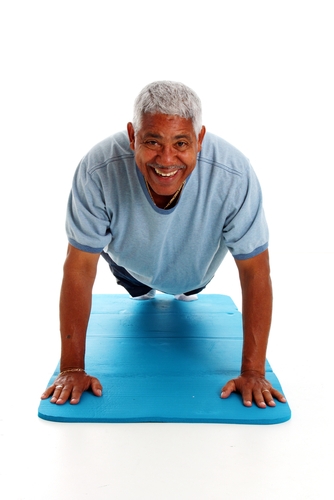Senior Fitness Tips and The Mistakes to Avoid

It is well-known that one of the best ways to stay healthy through senior retirement is keeping active with regular exercise. Maintaining a normal body weight and doing at least two hours and 30 minutes of aerobic activity per week can greatly reduce the risk of developing chronic illnesses such as heart disease, diabetes or dementia.
Senior Fitness Tips: What to Not Do
Millions of seniors already participate in some form of exercise on a daily or weekly basis and follow the recommendations by the Centers for Disease Control and Prevention. While almost any type of exercise can be beneficial for the body, there are a few methods that can actually cause more harm than good. Here are a few of the top fitness mistakes made by seniors:
Wrong intensity
Studies have shown that high intensity workouts can burn more fat in less time compared to lower intensity exercises. Before breaking out the kickboxing gloves, seniors should be aware that high-intensity training isn’t for everyone. Most people tend to slow down with age and aren’t able to workout the same way they could when they were in their 20s. Exercising too vigorously can lead to excessive fatigue, shortness of breath, dizziness and pain.
One of the main goals of a regular senior fitness routine is continued practice. Getting hurt from a high-intensity workout could put someone on the sidelines with an injury for several weeks. To avoid getting hurt from working out too hard, seniors should start slowly with their exercises and let the intensity develop. There may come a point where high-intensity workouts are feasible without injury or pain, but it will take time to work up to that point.
Poor Form in Senior Fitness
There are several exercises that simply use a person’s body weight as resistance. Pushups, sit-ups and squats, for example, don’t necessarily require any equipment, but use body weight to challenge muscles. While these are all great exercises to do, there is a wrong way to do them.
For sit-ups or crunches, placing feet under a heavy object or having someone hold ankles steady can actually disrupt the stomach muscles from working hard. Instead, it is likely that more strain is being put on the hip flexor muscles. Feet should be planted firmly on the ground or in the air when doing crunches or sit-ups. This will make the stomach muscles work harder and provide a stronger core, which is good for balance.
For pushups, many make the mistake of placing too much of their weight on their wrists, which aren’t built to hold all of that pressure. Instead, weight should be focused on the outside of the hands, like the person is trying to grip the floor. In addition to emphasizing weight in the wrong area of the hands, some people doing pushups tend to let their hips sag to the floor. Good form involves a straight back where the torso is aligned with the hips. This form engages the core muscles better. Pushups can seem daunting to some people and who may not think they will able to do them. However, there are several variations that seniors can adapt to learn that can reduce the resistance like using an exercise ball.
When squatting, some tend to put their weight forward, bending their knees past their feet. As one of the best exercises for stronger leg muscles and balance, proper squatting form is very important. Keeping the knees in line behind the toes will take off some of the pressure on joints, hips, knees and ankles, and engage the leg muscles so they are doing most of the work.
Imbalances
Similar to the importance of having proper form, correcting any imbalances while working out is essential. After years of poor posture or old injuries, many people suffer from muscles imbalances that can affect their workout. Before starting any exercise, make sure the body is centered. Leaning heavily on one side can cause strain and limit mobility. Fortunately, most muscle imbalances can be corrected with the right kinds of exercises and strength training. If a senior has anything to correct or work on, it should be addressed before beginning any exercise program.

